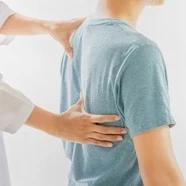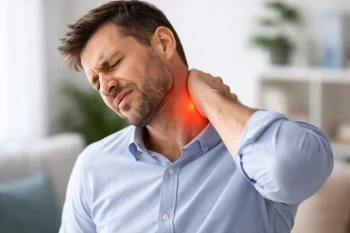
Back pain in children is a growing concern, significantly impacting their overall health and daily routines. While many parents might assume that back pain is an issue reserved for adults, children are increasingly experiencing discomfort that can disrupt their activities, school performance, and quality of life. Addressing even mild back pain promptly is crucial to avoid potential long-term problems. Factors such as carrying heavy backpacks improperly can lead to chronic back issues, emphasizing the importance of prevention and proper backpack use.
Understanding Back Pain in Children
By downloading the Digital Patient Chart mobile app you can better control your patient portal.
Back pain in children can manifest in various ways, from mild discomfort to severe pain that limits movement. Common causes include muscle strain, poor posture, injuries, and underlying medical conditions. However, one of the most preventable causes is the improper use of backpacks.
Children often carry backpacks that are too heavy or worn incorrectly, putting undue strain on their developing spines. This can lead to muscle fatigue, joint pain, and long-term issues such as scoliosis or chronic back pain. Parents, teachers, and healthcare providers must be aware of the signs and take proactive steps to mitigate these risks.
Signs and Symptoms of Back Pain in Children
Children may not always express their discomfort, so it’s essential to recognize the signs of back pain:
- Complaints of pain in the lower or upper back
- Noticeable changes in posture or walking patterns
- Difficulty in carrying out daily activities or reluctance to engage in physical activities
- Unexplained irritability or fatigue
The Role of Backpacks in Childhood Back Pain
Backpacks, while essential for carrying school supplies, can be a significant source of back pain if not used correctly. The American Chiropractic Association (ACA) recommends that a child’s backpack should not weigh more than 10-15% of their body weight. Overloaded backpacks can cause:
- Muscle strain and fatigue
- Compression of the spine
- Postural imbalances leading to long-term musculoskeletal issues
Tips for Proper Backpack Use
To prevent back pain and ensure the proper use of backpacks, consider the following tips:
1. Choose the Right Backpack: Opt for a backpack with wide, padded shoulder straps and a padded back. This helps distribute weight evenly and provides comfort.
2. Adjust the Straps: Ensure the backpack sits properly on your child’s back. The bottom of the backpack should rest at the curve of the lower back, not more than four inches below the waistline.
3. Distribute Weight Evenly: Pack the heaviest items closest to the back and distribute weight evenly. Use all compartments to spread out the load.
4. Encourage Two-Strap Use: Always use both shoulder straps to avoid muscle strain and imbalance.
5. Limit Weight: Regularly check and remove unnecessary items from the backpack to keep the weight manageable.
6. Teach Good Habits: Encourage your child to use lockers or desks to store books between classes and to avoid carrying the backpack for extended periods.
Preventive Measures Beyond Backpack Use
In addition to proper backpack use, other preventive measures can help mitigate back pain in children:
1. Promote Good Posture: Teach children to maintain good posture when sitting, standing, and walking. Proper posture can significantly reduce the risk of developing back pain.
2. Encourage Physical Activity: Regular exercise strengthens the muscles that support the spine. Activities such as swimming, yoga, and stretching exercises are particularly beneficial.
3. Educate on Ergonomics: Ensure that your child's study area is ergonomically set up. This includes having a chair and desk at the appropriate height to avoid slouching or hunching over.
4. Monitor Screen Time: Excessive screen time can lead to poor posture and increased back pain. Encourage breaks and physical activity to counteract prolonged periods of sitting.
When to Seek Professional Help
If your child continues to experience back pain despite these preventive measures, it’s important to seek professional help. A pediatrician, chiropractor, or physical therapist can evaluate your child’s condition and recommend appropriate treatments. Early intervention is key to preventing chronic issues and ensuring your child’s overall well-being.
Chiropractic Care for Children
Chiropractic care can be an effective treatment for back pain in children. Chiropractors specialize in diagnosing and treating musculoskeletal issues, including those related to the spine. They can provide:
- Spinal Adjustments: Gentle manipulations to correct misalignments and improve function.
- Posture and Exercise Guidance: Recommendations for exercises and stretches that support spinal health.
- Ergonomic Advice: Tips on proper backpack use and posture to prevent future problems.
Conclusion
Back pain in children is a serious issue that requires attention and preventive measures. Parents and caregivers can significantly reduce the risk of chronic issues by understanding the impact of back pain, recognizing the signs, and implementing proper backpack use. Encouraging good posture, and physical activity, and seeking professional help when necessary are crucial steps in ensuring your child’s long-term health and well-being.









Leave a comment